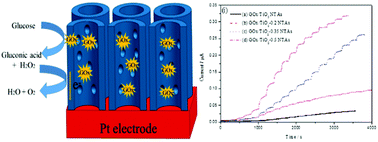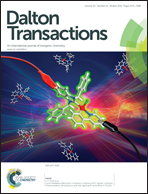Electrochemical performance and biosensor application of TiO2 nanotube arrays with mesoporous structures constructed by chemical etching
Abstract
Novel mesoporous TiO2 nanotube arrays (TiO2 NTAs) were synthesized by an anodization method combined with chemical etching in HF solution, and the electrochemical performance was studied. Glucose oxidase (GOx) was immobilized on the mesoporous TiO2 NTAs to achieve an efficient biosensor for amperometric detection of glucose. The morphology, structure, component and electrochemical performance of mesoporous TiO2 NTAs were characterized by scanning electron microscopy, high resolution transmission electron microscopy, X-ray diffractometry, X-ray photoelectron spectrometry and an electrochemical workstation, respectively. The influence of the mesoporous structure on the electrochemical performance is discussed in detail by comparing the cyclic voltammograms and electrochemical impedance spectrum of TiO2 and mesoporous TiO2 NTAs in different conditions. High electrochemical active surface area and electron transfer rate play key roles in enhancing the electrochemical performance of mesoporous TiO2 NTAs. When used as the basis of a biosensor, the amperometric response of glucose on a GOx/TiO2-0.5 NTAs electrode is linearly proportion to the glucose concentration in the range from 0.1 to 6 mM with a sensitivity of 0.954 μA mM−1 cm−2, which is 14.3 times that of un-etched GOx/TiO2 NTAs.


 Please wait while we load your content...
Please wait while we load your content...